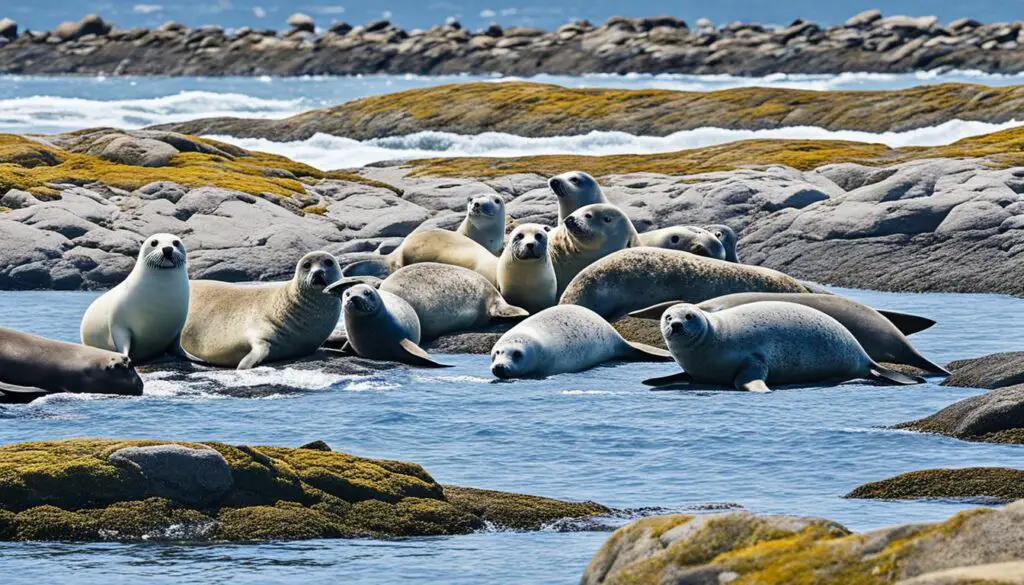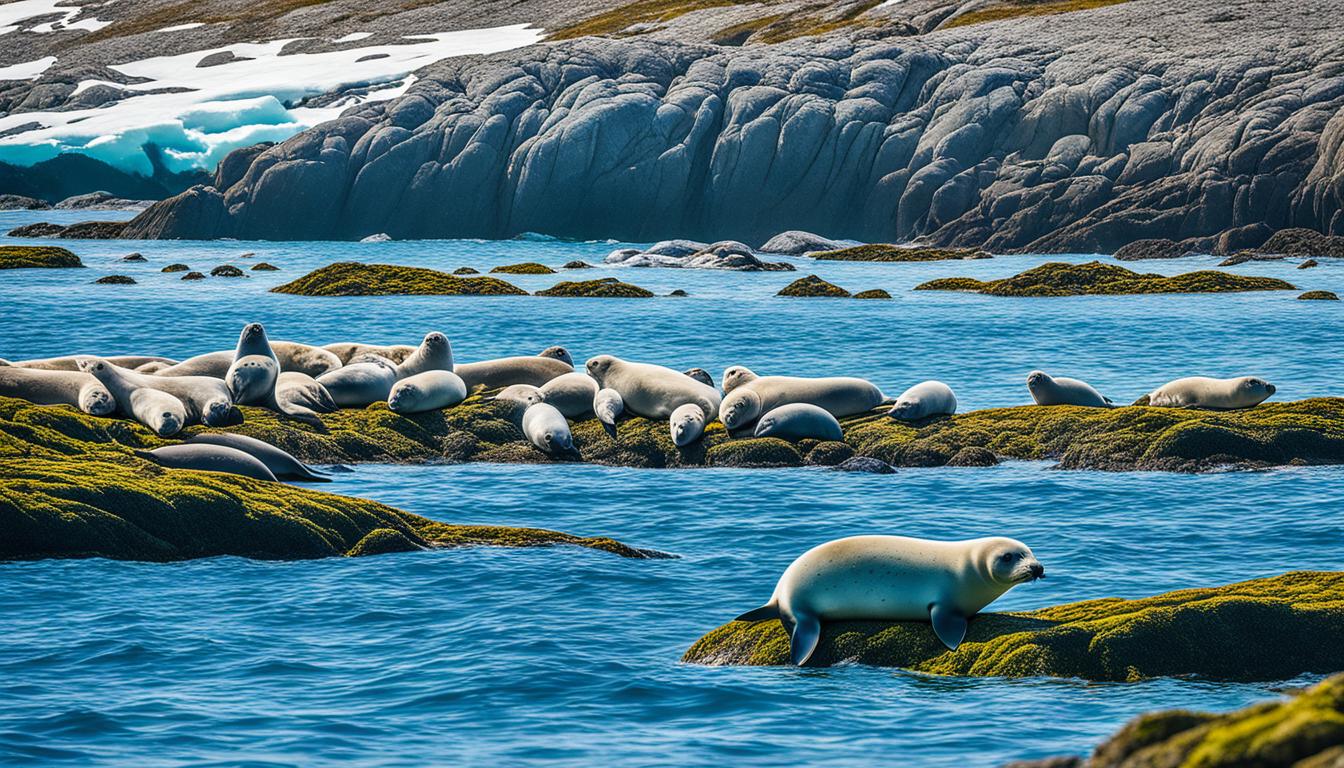Learning where seals live helps us understand their role in the ocean. There are 33 different seal species, spread across three families. They live in many places, from cold Arctic waters to warm tropical coasts. Seals have special features like thick blubber that let them live in different environments.
Some seals, like the Baikal seal, even live in freshwater lakes. By learning about their homes, we can see how important they are to the ocean. We also learn why we need to protect them.
Introduction to Seal Habitats
Learning about seal habitats helps us appreciate these amazing animals. Seals live in many places, like the sea, land, and ice. These places are key for their survival, offering food, breeding spots, and places to rest.
Seals are mammals that live partly in water and partly on land. They need both places for different things they do. Many seals use sea ice to give birth and care for their babies. This shows how important it is to keep their homes safe.
Things like food and temperature affect where seals live. By learning about their sea homes and how they fit into different places, we understand what they need. This helps us work on saving these amazing sea animals.
Where do seals live?
Seals live in various places, showing their special ways of adapting and behaving. They prefer colder areas, but some like warmer waters too. Each type of seal has its own favorite places that help them survive and have babies.
Geographical Distribution of Seals
Seals can be found all over the world. Some, like the Hawaiian monk seal, stick to certain spots. Others, like the crabeater seal, live in the cold waters of Antarctica. This shows how different seals like different places, needing certain conditions to live well.
Specific Habitat Needs for Different Species
Every seal type needs its own special place to live, shaped by the environment. Cold-water seals have a lot of blubber to keep warm and float. In warmer places, seals need less fat and eat differently. Knowing this helps us protect their homes, so they can keep living where they do.
Types of Seals and Their Habitats
Seals come in different types, mainly based on their looks and where they live. Knowing about these differences helps us understand their role in the ocean. It makes us appreciate how they fit into their environments.
Eared Seals vs. Earless Seals
Eared seals have outer ear flaps and are good at moving on land. They like to live on rocky shores and beaches. Earless seals, on the other hand, don’t have outer ears and are better swimmers. They live in colder areas, often near ice.
Eared seals live in various places, including seal coastal dwellings. Earless seals prefer icy waters in colder regions.
Unique Habitats for Walruses
Walruses need special places to live because of their unique way of life. They like shallow coastal areas and ice floes for resting and breeding. They use their tusks to get onto ice, showing how they rely on certain seal coastal dwellings.
Having walruses in these places shows why we must protect their homes. It’s key for their survival and keeping the ecosystem balanced.

Seal Natural Environments: Cold vs. Warm Waters
Seals live in many places, from icy waters to warm coasts. They have special ways to survive in both cold and warm climates. This shows how important their adaptations are for living in different environments.
Adaptations of Seals in Cold Waters
In cold waters, seals have amazing adaptations. They have a thick layer of blubber that keeps them warm and stores energy. Their dense fur also helps keep heat in, which is key for surviving in freezing seas.
This helps them stay warm and survive in places where it’s hard to find food and shelter.
Survival Strategies in Warmer Regions
In warmer areas, seals have their own ways to stay alive. They find cooler water to swim in and avoid the sun when it’s hottest. These actions show how adaptable they are and how climate change affects their homes.
These strategies help them live in warmer places, showing how resilient they are against tough conditions.
FAQ
Where do seals live?
Seals live in many marine places all over the world. They like cold waters best. Some, like the Hawaiian monk seal, live in warmer areas.
What are the main types of seal habitats?
Seals live in different places. They like icy coasts, open ocean, and ice floes. These places are important for mating, giving birth, and resting.
How do different seal species adapt to their habitats?
Seals change to fit their homes. For example, cold-water seals have thick fat to stay warm. Seals in warm places look for cooler spots to stay cool.
What is the significance of seal habitats for their survival?
Knowing where seals live helps us protect them. These places give them what they need to live and breed. They also keep them safe from climate change.
Are there seals that live in freshwater?
Yes, the Baikal seal lives in Lake Baikal’s fresh water in Siberia. This shows how adaptable seals can be.
What do seals require from their habitats?
Seals need lots of food and safe places to have their babies. These things are key for their health and having babies.
How does climate change affect seal habitats?
Climate change is a big problem for seals. It changes water temperatures, ice, and food. This messes with their breeding and eating habits.







